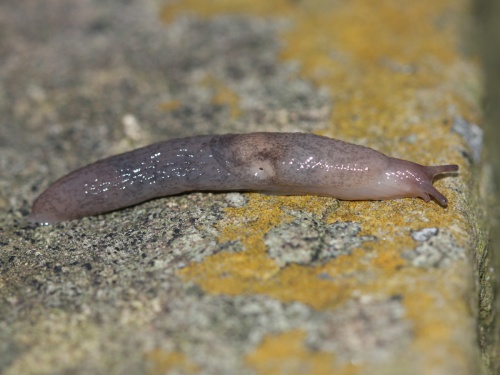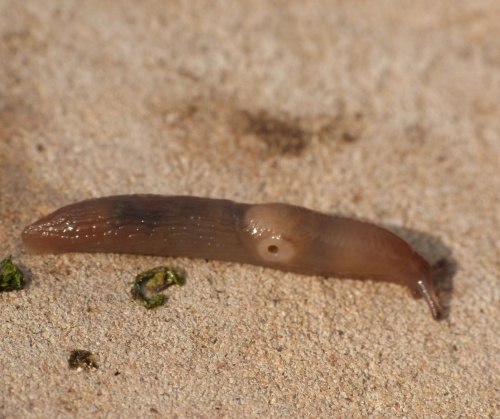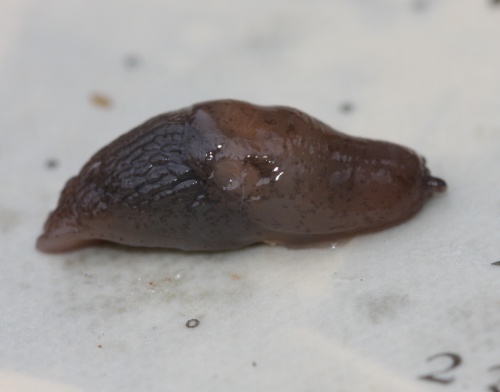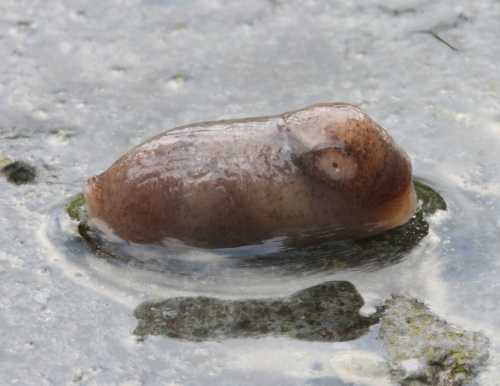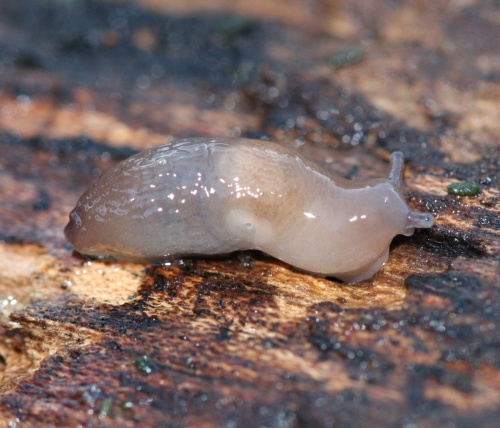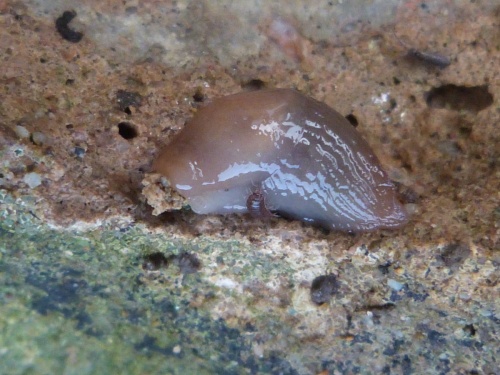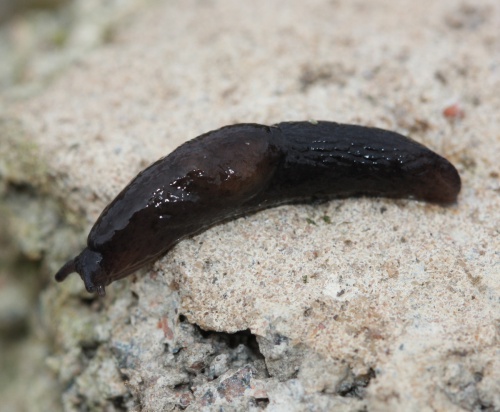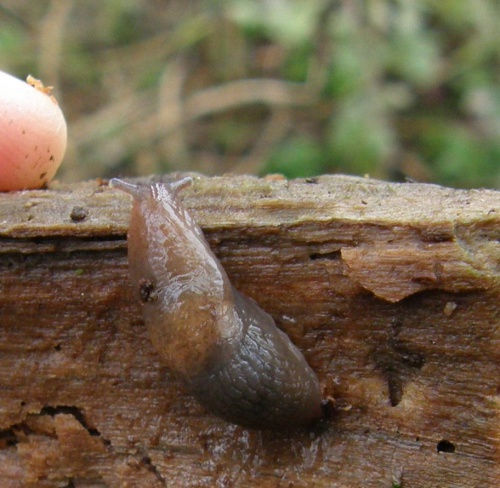Chestnut Slug - Deroceras invadens
Usually pale blotchy brown, but can be darker. It can be distinguished from the commoner D. reticulatus by its finer, smoother tubercles and the dark sole. It also has a pale ring around the breathing pore, though this can be faint in some specimens. A useful ID tip is that it is a (relatively!) fast mover and is usually the first slug to slide away when disturbed.
Deroceras reticulatum is larger, has larger tubercles and a net-like pattern in the grooves. It has a pale sole. (see ID Aids below)
Deroceras laeve is small (similar in size to D. invadens) and has a brown sole, concolorous with the body.
- 20-25mm
- short keel at rear of body
- pale rim around the breathing pore
Netted Slug vs Chestnut Slug
The Netted Slug, Derocerus reticulatum, is probably the most common and widespread slug in the UK. It can be found in almost all terrestrial habitats so is a species you are likely to encounter frequently. Whilst it is fairly straightforward to identify, it is most likely to be confused with the Chestnut Slug, Derocerus invadens, which is also common, particularly around buildings and in disturbed sites. So how can you be sure which is which?
Firstly check that it is a Derocerus:
- Small-medium size (15-30mm)
- Pale coloured – a shade of off-white/pale grey/pale brown
- No stripes or spots (the Netted Slug may have a few vague brown blotches)
- A keel at the tip of the tail but only running a short way over the body
- A whitish sole and colourless/milky mucus
- Mantle (front section) is roughly half the length of the slug
Found to be particularly common in Nurseries, but also found in parks and gardens.
All year round.
Introduced to Britain in the early 1930s. It can lay around 30 eggs a week these take 2 weeks to hatch and reach sexual maturity in around eight weeks.
Common over most of Britain and increasing.
Common in Leicestershire and Rutland.
Leicestershire & Rutland Map
Enter a town or village to see local records
MAP KEY:
Yellow squares = NBN records (all known data)
Coloured circles = NatureSpot records: 2020+ | 2015-2019 | pre-2015
UK Map
Species profile
- Common names
- Tramp Slug, Caruana's Slug, Chestnut Slug
- Species group:
- Slugs & Snails
- Kingdom:
- Animalia
- Order:
- Pulmonata
- Family:
- Agriolimacidae
- Records on NatureSpot:
- 132
- First record:
- 14/09/1985 (Rundle, Adrian)
- Last record:
- 20/02/2024 (Edwards, Jo)
Total records by month
% of records within its species group
10km squares with records
The latest images and records displayed below include those awaiting verification checks so we cannot guarantee that every identification is correct. Once accepted, the record displays a green tick.
In the Latest Records section, click on the header to sort A-Z, and again to sort Z-A. Use the header boxes to filter the list.


